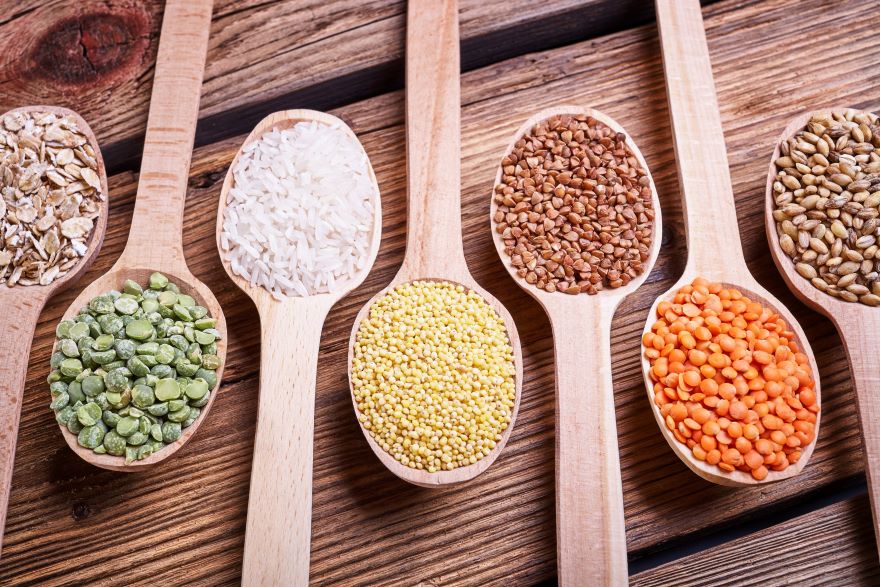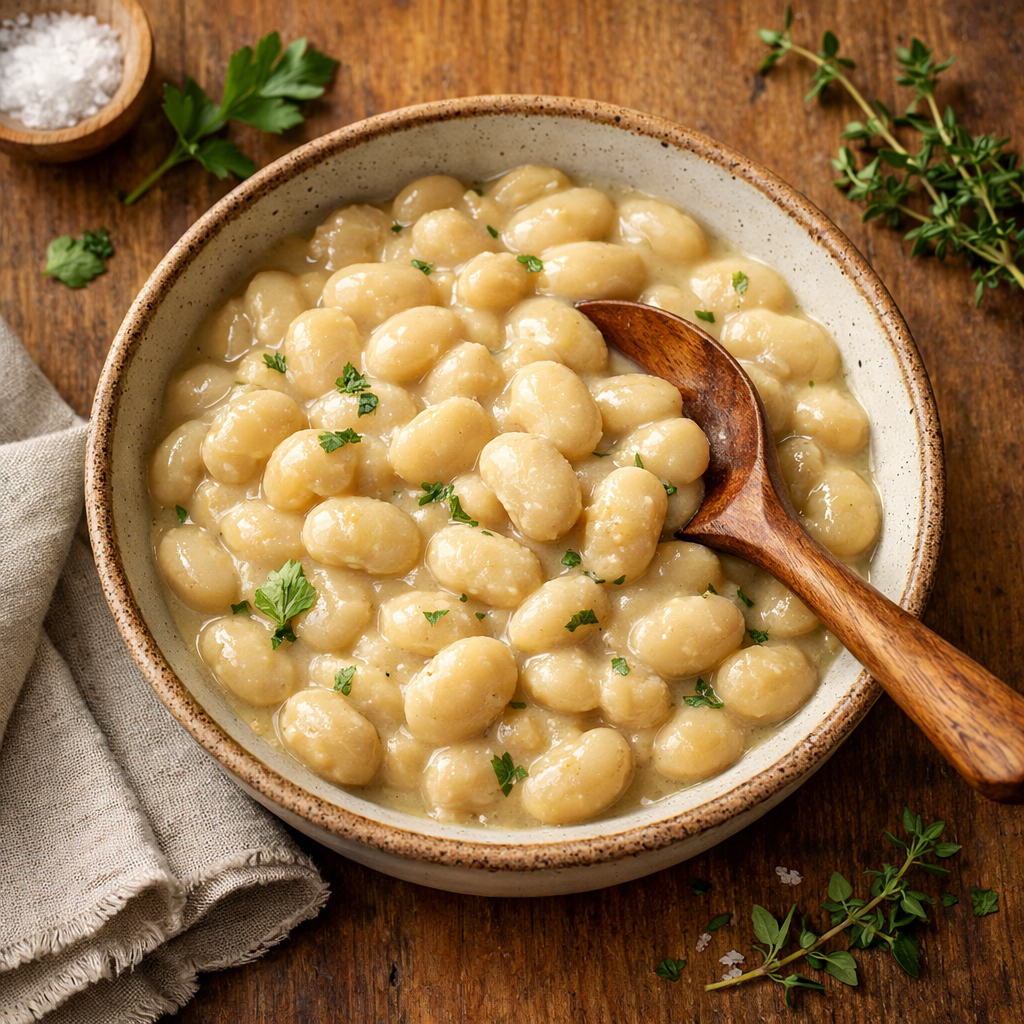Lentils v rice are two staple foods found in a variety of cuisines all around the world. These nutritious legumes and grains have been cultivated for thousands of years, providing essential nutrients and calories for countless generations. Lentils and rice are versatile and nutritious.
In this article, we’ll compare the nutritional value of lentils and rice, as well as explore their unique culinary uses and health benefits. Explore the versatility of lentils and rice for wholesome, budget-friendly meals and gain valuable cooking insights.
Key Takeaways
- Lentils and rice offer distinct nutritional profiles, with lentils being richer in protein and certain vitamins.
- Both ingredients are versatile in various cuisines, allowing for a variety of delicious dishes.
- Incorporating lentils and rice into your diet can support a healthy lifestyle and cater to various dietary needs.
Comparative Nutrition of Lentil and Rice
Lentils have more vitamins and minerals than rice. This includes a higher level of vitamin B6, iron, potassium, magnesium, manganese, and calcium. On the other hand, rice is a good source of selenium, which is present at a higher level than in lentils.
As for the protein content, it’s important to note that lentils have a higher amount of protein than rice. However, combining them in a meal can provide all the essential amino acids needed for a complete protein.
When it comes to calories, rice has a somewhat higher caloric value than lentils due to its carbohydrate content. In contrast, lentils offer more fiber, contributing to a feeling of fullness and aiding digestion.
In terms of sodium, both lentils and rice are naturally low in sodium. Limit salt when cooking to avoid health issues.
The mineral content in these two foods also varies. Lentils are an excellent source of iron, potassium, and phosphorus. Meanwhile, rice is high in phosphorus and offers a small amount of zinc. I also found that lentils contain more magnesium than rice, contributing to bone health and muscle function.
Lentils contain vitamin K for blood clotting and bone metabolism. Rice, on the other hand, doesn’t provide significant amounts of vitamin K.
In conclusion, rice v lentils both offer various nutritional benefits. Combining lentils and rice creates a balanced meal.
Culinary Uses and Recipes
Lentils and rice serve as versatile ingredients for many delicious dishes. They can star as main meal components or a satisfying side dish. I find that the variety of lentils and rice types also allows for various textures and flavors in recipes.
One popular dish that combines lentils v rice is Mujadara, a Middle Eastern staple with caramelized onions. The onions offer a slight sweetness that complements the earthiness of the lentils. I like using green or brown lentils and basmati or brown rice to enhance the flavor profile.
Meal Prep
Meal prepping for the week ahead? Try an easy weeknight lentils and rice recipe that includes onions, carrots, and simple seasonings. Prep time is roughly 15 minutes, while the total cook time is around 45 minutes. Sauté veggies and cook lentils and rice in a pot. Finish by seasoning with sea salt, black pepper, and ground cumin, adjusting to taste.
For a one-pan Mediterranean-inspired dish, I recommend Mediterranean Rice and Lentils. It combines rice, lentils, bell pepper, celery, tomatoes, and Kalamata olives for a flavorful, hearty meal. This recipe involves sautéing the vegetables in extra-virgin olive oil and seasoning with curry powder, sea salt, and black pepper. Add cooked rice and lentils for a flavorful dish.
Don’t forget to add some garnishes and complementary flavors to your lentils and rice recipes. Caramelized onions add a touch of sweetness, while a drizzle of tahini sauce can add creaminess. Fresh herbs, such as cilantro, provide a pop of color and brightness to the dish. Feel free to get creative with your garnishes, or try different variations to keep things interesting.
Soaking lentils and rice speeds up cooking and aids digestion. Beyond their use in standalone dishes, lentils and rice may also serve as nutritious additions to soups, stews, and casseroles.
Lentils and rice enhance any meal with flavor and texture.
Health Benefits of Lentil and Rice
Lentils and rice offer unique benefits for a balanced diet.
Lentils are rich in protein and fiber. In fact, these little seeds rank as the second-highest source of protein among beans. Brown rice and lentils provide complete protein for muscle development. Rich in iron, potassium, and calcium, lentils also fortify the body with key minerals needed for multiple essential functions.
Another notable component in lentils is their high content of B vitamins, particularly folate. Folate, besides contributing to cell repair and growth, plays a vital role in preventing anemia and maintaining a healthy nervous system. Furthermore, lentils are packed with antioxidants like vitamin K and manganese, which aid in blood clotting, metabolism, and the protection of cells from oxidative damage.
On the other hand, rice, specifically brown rice, is also a nutritious staple food. As a whole grain, it boasts a substantial amount of fiber compared to its white counterpart. This means brown rice can help improve digestion and support healthy weight maintenance. Brown rice provides essential minerals like magnesium, phosphorus, and zinc, which contribute to healthy bones, teeth, and immune function.
One of the key nutrients found in rice is selenium, a mineral that plays a crucial role in combating inflammation and promoting a healthy immune system. It’s worthy to mention that rice provides three times more selenium than lentils, making it an important addition to a balanced diet.
While neither lentils nor rice is considered a superfood, I believe their nutritional benefits make them highly valuable in a diverse and healthy meal plan. While lentils offer a protein-packed, vitamin-rich option for those seeking plant-based alternatives, rice complements these dishes with a versatile, fiber-dense carb component. Together, these two staples can create delicious and nutritious meals for individuals who prioritize a healthy lifestyle.
Lifestyle Adaptations
As a person who values a healthy diet, it’s essential to adapt and make the right choices for our lifestyles. Both rice and lentils can fit into various eating preferences, such as vegetarian, vegan, or even if you still consume meat and fish.
When I am following a vegetarian or vegan diet, lentils are my go-to choice as they are higher in protein, fiber, and essential minerals like iron, magnesium, and zinc. These nutrients are vital for maintaining a healthy, plant-based diet. Moreover, lentils also provide a great base for a variety of dishes, such as stews, soups, and salads.
When I need to include more carbohydrates in my diet, rice serves as a fantastic option. It is a versatile ingredient that pairs well with many protein sources, such as meat or fish. I also enjoy having rice bowls with different types of cuisines, from Mexican-style burritos to Asian-inspired stir-fries.
For a more balanced approach, try combining lentils and rice in your meals. Many traditional dishes, such as Indian daal, use these ingredients together to create a filling and nutritious meal. By doing this, you can benefit from the nutrients and various textures that both lentils and rice offer.
Remember to think about the lifestyle adaptations that suit your dietary preferences best. Whether you are vegetarian, vegan, or a meat and fish enthusiast, find the right balance of lentils and rice in your meals to ensure you are getting the nutrition your body needs.
Budget-Friendly and Versatile Meals
I have always appreciated budget-friendly and versatile meals, which is why I often rely on lentils and rice as staple ingredients in my cooking. These two items are not only cheap but also easy to prepare, making them perfect for simple weeknight dinners.
Lentils are legumes that provide an excellent source of plant-based protein as well as important nutrients like fiber, iron, and potassium. Rice, a whole grain, is an affordable and accessible source of carbohydrates, which provides energy for my body. Both of these ingredients can be combined in endless ways to create delicious, affordable meals.
When it comes to easy meals, one of my favorites is Southwest Lentils and Rice Skillet. This dish uses simple ingredients I likely already have in my pantry, and it’s not only filling but also packed with flavor. Another favorite recipe of mine is the Spiced Instant Pot Lentils and Rice – it is incredibly convenient, utilizing the Instant Pot’s pressure cooking capabilities, making it a timesaver as well.
In addition to being tasty, lentils and rice are also highly versatile, adapting to a variety of global cuisines. I often experiment with spices, herbs, and veggies to create unique, flavorful dishes. For example, I can add Indian spices like turmeric, cumin, and coriander for an aromatic curry, or use Mediterranean flavors like garlic, thyme, and paprika for a comforting stew.
In conclusion, I love incorporating lentils and rice into my cooking due to their budget-friendly nature, ease of preparation, and versatility. By combining these two ingredients with a variety of flavors and cooking techniques, I can create a diverse array of delicious, healthy meals.
Popular Dishes with Lentil and Rice
I have come across several dishes that combine lentils and rice, showcasing the versatility and global culinary appeal of these two ingredients. One famous recipe is Mujadara, a Middle Eastern dish that consists of cooked lentils and rice topped with caramelized onions. Simple yet delicious, mujadara remains a staple in many households across the region.
In India, lentils and rice are often incorporated into traditional recipes like khichdi, where they are cooked together with spices to create a nourishing one-pot meal. Lentils and rice are also part of the popular South Indian dish, bisi bele bath, which adds vegetables and a unique spice blend for a more complex flavor profile.
For those looking for a more inventive combination, try mixing lentils, rice, bacon, and sage for a delicious, hearty dish. The savory bacon and earthy sage add a unique twist, giving depth to the flavors and elevating the humble lentils and rice to new heights.
While not necessarily traditional, I have encountered a tasty Mediterranean-inspired rice and lentil dish that brings together flavors from different countries. From using Kalamata olives to sun-dried tomatoes and feta cheese, these additions create an exciting fusion of textures and tastes that can be enjoyed on its own or as a side dish.
As you can see, lentils and rice lend themselves to various preparations, showcasing the range and adaptability of these ingredients. With their ability to meld with flavors from different culinary traditions, there is no shortage of delicious lentil and rice-based dishes to try.
Frequently Asked Questions
- What are the health benefits of lentils v rice?
When comparing lentils to rice nutritionally, lentils have higher amounts of Folate, Fiber, Iron, Copper, Phosphorus, Potassium, Zinc, Vitamin B6, and Magnesium. Meanwhile, rice has more selenium. Lentils may provide more micronutrient content which could be beneficial for overall health. Additionally, lentils have a higher fiber content, supporting digestion and promoting a feeling of fullness. - Is lentil or rice a better choice for bodybuilding?
Both lentils and rice can play a role in a balanced bodybuilding diet. Lentils contain higher levels of protein, being a better plant-based protein source for muscle growth and repair. However, rice, particularly brown rice, provides a good source of carbohydrates, which is crucial for maintaining energy levels during workouts. - How do red lentils compare nutritionally to rice?
Red lentils, like other types of lentils, have higher protein content than rice. They also surpass rice in terms of micronutrients, such as Folate, Fiber, Iron, Copper, Phosphorus, Potassium, Zinc, Vitamin B6, and Magnesium. However, rice still has a higher amount of Selenium in comparison. - Which has fewer carbs: lentils or rice?
Rice is higher in carbohydrates when compared with lentils. It’s important to consider that the type of rice can also impact the carbohydrate amount, with brown rice having slightly fewer carbohydrates than white rice. - Can you substitute lentils for rice in meals? Y
es, it is possible to substitute lentils for rice in some meals. Keep in mind that 1 cup of dried lentils yields nearly 2 cups of cooked lentils, while 1 cup of uncooked rice yields 3 to 4 cups when cooked. So, when substituting, you should use 1 1/2 to 2 cups of dried lentils for every cup of dried rice required in a recipe. - Do lentils offer more protein than rice?
Yes, lentils have a higher protein content than rice. This makes them an excellent choice for those seeking plant-based protein options or incorporating more protein into their diet.

*We may earn a commission for purchases made using our links. Please see our disclosure to learn more.



